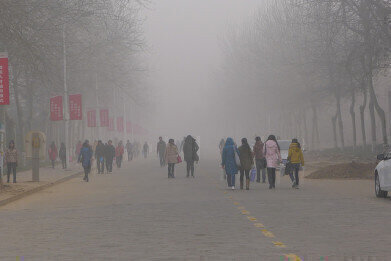Air Monitoring
Is it Possible to Deceive Air Pollution Meters?
Feb 20 2018
In 2015, German automotive giants Volkswagen became embroiled in a huge scandal when it was revealed that many of their vehicles contained devices intended to deceive pollution meters during testing conditions. The fallout from the scandal saw the recall of millions of cars, irreparable damage to the company’s reputation and untold harm to the environment, to boot.
Over the last couple of years, similar scandals have rocked China, albeit on a smaller scale. The latest incident took place just last month, when municipal vehicles were observed using mist cannons to tamper with air pollution readings – and not for the first time, either.
Caught red-handed
The environmental watchdog for the city of Shaoyang in southwestern Hunan province reported the misdemeanour last month, claiming that two anti-dust trucks were deployed by the local government with the express purpose of falsifying air quality data.
The trucks are equipped with mist cannons, which can help to disperse dust and other contaminative elements in the air. They are designed to be deployed around construction sites or on days of particularly poor air quality, but on the occasion in question, they were observed to concentrate efforts on the area surrounding two different monitoring stations.
An ongoing scandal
China has long suffered from poor air quality and a growing market for continuous emissions monitoring systems (CEMS) in the country had prompted the government to employ more pollution monitors and implement clean air policies.
However, there have also been a string of high-profile incidents wherein government officials have been caught attempting to fudge the numbers. In October 2016, five environmental officials were detained in the north-western city of Xian, after they were caught stuffing sensors with cotton to inhibit their ability to detect pollutants, then covering up the evidence by deleting surveillance tapes.
Meanwhile, in May of last year anti-smog trucks were spotted in Beijing loitering suspiciously close by another monitoring site. Just last month, more mist cannons were used in Shizuishan in Ningxia, though their plan was rumbled after the moisture froze on the outside of the building.
Change in attitude needed
These may be isolated incidents of officials trying to tamper with air pollution data, but they show a wider reluctance to tackle the root causes of the problem and a willingness to simply sweep the consequences under the rug.
The government has made all the right noises about transitioning away from fossil fuels, and over recent years it has invested more capital into renewable energy sources than anywhere else in the world. However, recent concerns were raised in Europe over Chinese plans to invest £385 billion on new coal-fired plants, casting doubt on their long-term commitment to sustainability.
If China is to shed the thick layer of smog that perennially covers much of its urban centres and the notoriety that comes with it, they must stop falsifying information and concentrate on solutions, not swindles. They may have shown that we definitely can deceive air pollution meters – but also that we definitely shouldn’t.
Digital Edition
IET 34.2 March 2024
April 2024
Gas Detection - Biogas batch fermentation system for laboratory use with automatic gas analysis in real time Water/Wastewater - Upcycling sensors for sustainable nature management - Prist...
View all digital editions
Events
Apr 30 2024 Melbourne, Australia
Apr 30 2024 Birmingham, UK
May 03 2024 Seoul, South Korea
May 05 2024 Seville, Spain
May 06 2024 Minneapolis, MN, USA


















